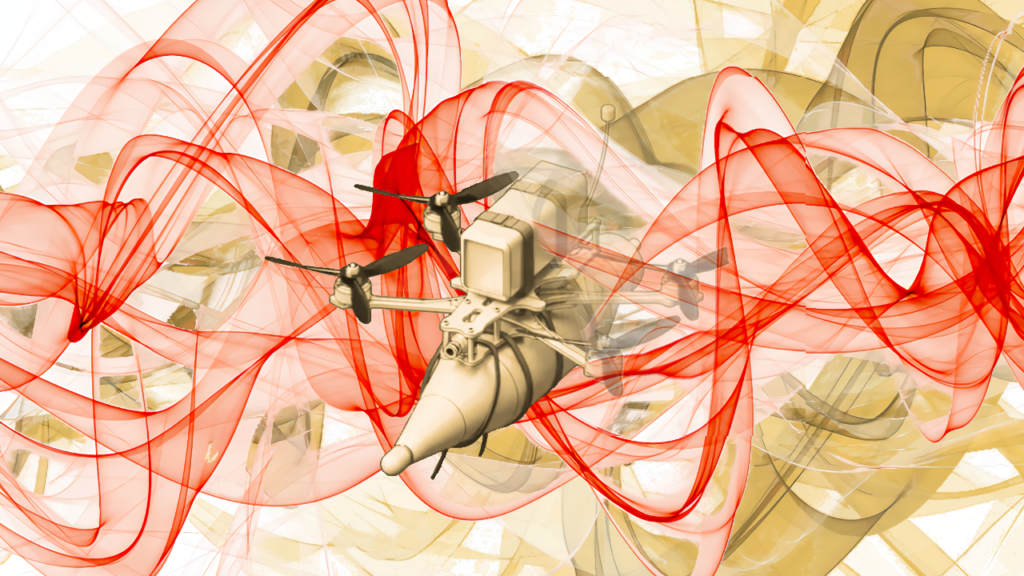Armies, navies, and air forces constantly look for ways to gain a competitive advantage over their adversaries. Technology plays a large role in this pursuit. Thomas C. Greenwood, a former Marine officer, and Patrick J. Savage, a Research Associate at the Institute for Defense Analyses, explain, “Military forces throughout history have pursued and embraced new technology for the combat edge it seems to portend. Superior surveillance platforms, weapons systems, communications equipment, and transportation methods can be decisive combat multipliers. The hope and promise that high technology will offer asymmetrical advantages is what imbues it with allure and appeal.”[1] Historian and military expert Alex Roland, goes a bit further. He writes, “Technology, more than any other outside force, shapes warfare; and, conversely, war (not warfare) shapes technology.”[2] Looking over today’s battle field, the two newest technologies garnering attention are artificial intelligence (AI) and drones. The impacts of these two technologies will continue to be significant in the decades ahead.
Artificial Intelligence and Warfare
The Economist observes, “The computer was born in war and by war. Colossus was built in 1944 to crack Nazi codes. By the 1950s, computers were organizing America’s air defenses. In the decades that followed, machine intelligence played a small part in warfare. Now it is about to become pivotal.”[3] The article goes on to note, “The technology is also revolutionizing the command and control that military officers use to orchestrate wars. … Because it sorts through and processes data at superhuman speed, it can pluck every tank out of a thousand satellite images, or interpret light, heat, sound and radio waves to distinguish decoys from the real thing. Away from the front line, it can solve much larger problems. … Today that means simple tasks, such as working out which weapon is best suited to destroying a threat. In due course, ‘decision-support systems’ may be able to grasp the baffling complexity of war rapidly and over a wide area — perhaps an entire battlefield. The consequences of this are only just becoming clear. AI systems, coupled with autonomous robots on land, sea and air, are likely to find and destroy targets at an unprecedented speed and on a vast scale.”
As the magazine notes, the gravest concerns about AI on the battlefield are associated with autonomous weapon systems. This uneasiness is widespread yet devilishly difficult to address. Kristian Humble, an Associate Professor of International Law in the School of Law and Criminology at the University of Greenwich, explains, “The escalating weaponization of AI parallels the nuclear arms race of the Cold War, with nuclear weapons being replaced with automated weapons systems. However, the international community, the United Nations, and international law have been struggling to adapt to and regulate the use of automated weapons, which are rapidly changing the landscape of modern warfare.”[4] He concludes, “It is uncertain whether the ethical or moral questions surrounding conflict driven by algorithms and machines without human intervention can ever be answered.”
Adding to this conundrum is the fact that, like most technologies, AI and robotics have dual uses. Mary ‘Missy’ L. Cummings, a professor of Robotics and Artificial Intelligence at George Mason University, explains, “Although it is not in doubt that AI is going to be part of the future of militaries around the world, the landscape is changing quickly and in potentially disruptive ways. … Given the present inability of AI to reason in such high-stakes settings, it is understandable that many people want to ban autonomous weapons, but the complexity of the field means that prohibition must be carefully scoped. Fundamentally, for instance, does the term autonomous weapon describe the actual weapon — i.e. a missile on a drone — or the drone itself? Autonomous guidance systems for missiles on drones will likely be strikingly similar to those that deliver packages, so banning one could affect the other. And how will technologies be treated that emerge from the growing commercial market, which is expected to leapfrog some aspects of military capability and possibly change public perception?”[5] The debate about AI on the battlefield will likely continue for years. Nevertheless, with the rapid advances being made in the field, the world is entering a new, and dangerous, era of warfare.
Drones and Warfare
While some of the discussion about AI is speculative, the use of drones in the battlefield is very real. Ulrike Franke, a senior policy fellow at the European Council on Foreign Relations, observes, “Drones have been around for a long time — a very long time, if you go back to Chinese fire kites or the Austrian attack on Venice using exploding balloons in 1849. Drones were used in Vietnam, in the Kosovo war, Afghanistan, Iraq, and, most recently, in the confrontation between Armenia and Azerbaijan in Nagorno Karabakh. The war in Ukraine is thus not ‘the first drone war’. It is neither the first war in which drones play an important role, nor the first in which both sides employ them. Nevertheless, the use of drones in Ukraine represents a step change.”[6] She adds, “Never before have so many drones been used in a military confrontation. The Royal United Services Institute estimates that Ukraine is losing 10,000 drones per month, giving an indication of how many are in use. Aerial defense systems are largely neutralizing manned aviation, making unmanned systems particularly important.”
In an article about drone warfare in Ukraine, former Google Chairman and CEO, Eric Schmidt, wrote, “When asked to identify the best tank-killing weapon in their arsenals, Ukrainian commanders of all ranks give the same answer: first-person-view drones, which pilots on the ground maneuver while watching a live feed from an onboard camera. These drones have made tank-on-tank engagement a thing of the past.”[7] Commenting on that article, Thomas P.M. Barnett, Principal Business Strategist at Throughline, Inc., wrote in an email, “You can — and should — extrapolate that data point to include virtually any platform you can name. The old X-on-X warfare, to include even sub-on-sub, will fall away as drones intervene and come to dominate.” Barnett points to a sci-fi short film about autonomous drones entitled “Slaughterbots” that he guarantees is “sure to scare you.” Although the film is science fiction, you will understand why there is so much concern about AI and drones.
As The Economist notes, “On the front line, drones embody just the last and most dramatic link in the kill chain, the series of steps beginning with the search for a target and ending in an attack.”
Concluding Thoughts
Obviously, in a short article, all of the implications and complications of using artificial intelligence and autonomous vehicles on the battlefield can’t be discussed. Nevertheless, it should be clear that there is a lot to talk about. As another article in The Economist noted, “AI-enabled tools and weapons are not just being deployed in exercises. They are also in use on a growing scale in places like Gaza and Ukraine. Armed forces spy remarkable opportunities. They also fear being left behind by their adversaries. Spending is rising fast. But lawyers and ethicists worry that AI will make war faster, more opaque and less humane. The gap between the two groups is growing bigger, even as the prospect of a war between great powers looms larger.”[8]
Footnotes
[1] Thomas C. Greenwood and Patrick J. Savage, “Technology and the Nature of War,” Marine Corps Association Gazette, 2 January 2024.
[2] Alex Roland, “War and Technology,” Foreign Policy Research Institute, 27 February 2009.
[3] Staff, “AI will transform the character of warfare,” The Economist, 20 June 2024.
[4] Kristian Humble, “War, Artificial Intelligence, and the Future of Conflict,” Georgetown Journal of International Affairs, 12 July 2024.
[5] Mary ‘Missy’ L. Cummings, “Artificial Intelligence and the Future of Warfare,” Chatham House, The Royal Institute of International Affairs, January 2017.
[6] Ulrike Franke, “Drones in Ukraine and beyond: Everything you need to know,” European Council on Foreign Relations, 11 August 2023.
[7] Eric Schmidt, “Ukraine Is Losing the Drone War: How Kyiv Can Close the Innovation Gap With Russia,” Foreign Affairs, 22 January 2024.
[8] Staff, “How AI is changing warfare,” The Economist, 20 June 2024.





